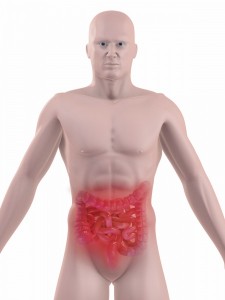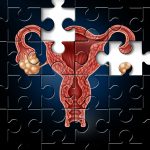Proper Positioning for Elimination
 It’s a very common scenario: You’re doing an initial intake with your patient. You ask about bowel movement history and your patient reveals a problem with chronic constipation that goes back many years.
It’s a very common scenario: You’re doing an initial intake with your patient. You ask about bowel movement history and your patient reveals a problem with chronic constipation that goes back many years.
As physicians, we often encounter patients who are baffled by symptoms of unknown etiology. Questioning our patients often uncovers the fact that they are having less-than-ideal bowel movements either in frequency, quality or both. In approaching this problem, we consider two tenets of naturopathic medicine – to treat the digestion and to treat the liver. We address these with supplements and/or diet modifications, but according to our philosophic principles, we should find the cause. We address what is happening internally, but what about the posture involved with elimination?
Posture for Elimination
The current posture for elimination in developed countries is sitting, in this case on a toilet. Is this the position nature intended? The history of the pedestal toilet dates back to 1738, when JF Brondel introduced the valve-type flush toilet (Pathak, 1995). Interestingly enough, Brondel was an English architect, not a physician nor an anatomist. The flush toilet he introduced underwent numerous “improvements” in the years to follow. However, none of these changes had anything to do with the anatomy of the human body.
History reveals that early humans innately used the squatting position when they defecated or eliminated. Squatting is the innate, natural position for eliminating waste. We see toddlers innately squat; and adults innately squat when there is no access to a bathroom facility.
The problem with the sitting position for elimination is that it produces increased pressure on the colon and has been shown to increase tendency towards constipation (Hornibrook, 1933). Further studies and research have linked the sitting position with conditions such as diverticulitis, IBS, appendicitis, colorectal cancer, prostatitis and hemorrhoids (Dimmer et al., 1996; Tobin, 1996; Online posting, n.d.).
The question of sitting vs. squatting for elimination was explored by Dimmer et al. when they looked at squatting in the prevention and treatment of hemorrhoids (1996). They concluded that squatting makes sense medically in the prevention of hemorrhoids.
Squatting during elimination is beneficial for the body in four ways:
1) Facilitates more complete elimination (through increased abdominal pressure)
2) Protects the appendix and small intestine
3) Releases the bend in the sigmoid colon
4) Straightens the final pathway to the anus.
By squatting, the body’s entire weight rests on both feet and the thighs are pressed against the abdomen. This allows waste to be expelled more easily due to natural compression of the colon.
Squatting also allows the ileocecal valve to be sealed by the tension in the right thigh. This tension increases pressure towards the ascending colon and at the same time prevents the backflow of waste to the jejunum of the small intestine.
The action of squatting results in the left thigh supporting and lifting the sigmoid colon.
This reduces the sharp downward angle to the anus and thus allows for easier flow of waste from the sigmoid colon into the anus and out of the body.
The puborectalis muscle is one part of the levator ani muscle. The levator ani muscles, together with the coccygeus muscle, make up the pelvic diaphragm. The puborectalis muscle originates from the posterior surface of the pubis and inserts to the posterior of the rectum. Its action is important in that it supports and aids the continence of the rectum by maintaining the anorectal angle. This is important because it prevents the involuntary release of stool. Squatting allows the puborectalis to relax, thus releasing its pressure on the rectum and reducing the angle of elimination to the anus. This results in an easier and more complete bowel movement (Hornibrook, 1933; Dimmer et al., 1996).
Elimination Position Study
In another rare study of sitting vs. squatting, Dr. Saeed Rad measured Iranian-style squatting toilets and European-style sitting toilets (Rad, 2002). The participants were 30 Iranians; 21 male and 9 female. In the study, radiographs were taken when the subjects were having bowel movements in the squatting and sitting positions. All subjects were asked to give feedback on their experience with both toilet postures. Measurements were taken of the anorectal angle and the distance between the perineum and the pelvic floor.
The results of the study found that the effectiveness of evacuation was reported as complete with the Iranian-style toilets and incomplete with the European-style toilets. Radiograph results showed that relaxation of the puborectalis muscle occurred, as well as straightening of the rectum and anal canal, with the Iranian-style toilets. In contrast, a bend was seen in the rectum, and there was incomplete relaxation of the puborectalis muscle with the European-style toilets. The anorectal angle on average was 132 degrees using the Iranian-style toilet, while the European style on average was 92 degrees. In some subjects, the angle disappeared entirely with the squatting position.
Measurements of the distance from the pelvic floor to the perineum showed that with the sitting posture the pelvic floor was forced downwards to a significant degree, resulting in a greater height in the Iranian-style toilet (8.4cm vs. 6.6cm).
Based on the results of his study, Dr. Rad concluded that the squat toilet “is a more comfortable and efficient method of bowel evacuation” than the sitting toilet.
Based on these studies, squatting for elimination allows for complete and efficient elimination. This is a very important goal for our patients. The ramifications for them and for us as physicians are numerous: First and most important is a more complete detoxification process; second is that with our patients having a cleaner digestive tract, they may not have to be prescribed as many supplements and/or may better absorb the supplements we do prescribe.
Discussing Elimination with Patients
So, why isn’t the subject of squatting for elimination a medical topic of conversation? Dimmer et al. offered one plausible explanation, stating “that it does not fit the medical model of high-tech intervention.” They continued that “Adopting squatting does not require the professional involvement of doctors, nor does it provide any advantage to other powerful interests such as the pharmaceutical industry. This might be enough to marginalize squatting, but there is the important additional dimension of toilet technology and habits. The vast infrastructure of pedestal toilets in the West, combined with ingrained habits and a reticence to discuss issues associated with the anus, all weigh against the promotion of squatting” (Dimmer et al., 1996). As NDs, we continually face these obstacles when we ask patients about the quality and frequency of bowel movements. Talking about social and economic issues surrounding defecation is as welcome as the tax bill.
However, we should still talk with our patients about how the squatting posture provides for the most efficient and complete means of elimination.
Anatomically speaking, squatting is the most beneficial posture for the body when eliminating. As a preventive tool, incidents of hemorrhoids, constipation, diverticulitis, colon cancer, etc., could be reduced. Realistically speaking, squatting should start from childhood. Given the current socioeconomic factors, however, it is highly unlikely we will get our patients to install squat toilets in their homes. We should, however, look to re-establish the practice of squatting. Products are available that can help patients achieve a squatting position when using the sitting toilets. Using these products would present an efficient, inexpensive way to improve digestion and elimination. The squat position can also improve the effectiveness of supplementation, or possibly even reduce the necessity or quantity of supplementation.
References
Pathak B: History of Toilets, International Symposium on Public Toilets, Hong Kong, May 25-27, 1995. Available online at www.sulabhtoiletmuseum.org/pg02.htm.
Hornibrook FA: The Culture of the Abdomen, Garden City, 1933, Doubleday, Doran & Co. Inc., 75-78.
Dimmer C et al: Squatting for the prevention of hemorrhoids?, Townsend Letter for Doctors & Patients, Oct;159: 66-70, 1996. Available online at www.uow.edu.au/arts/sts/bmartin/pubs/96tldp.html.
Tobin, A: Prostate Disorder – Causes and Cure, Bowden, Australia, 1996, National Direct Publishing, 132.
Rad S: Impact of ethnic habits on defecographic measurements, Archives of Iranian Medicine Apr;5(2):115-117, 2002.
Sikirov BA: Primary constipation: an underlying mechanism, Med Hypotheses Feb;28(2):71-3, 1989.
Duthie HL: Dynamics of the rectum and anus, Clinics in Gastoenterology 4(3), 467-477, 1975.
Henry MM, Swash M (eds), Faecal Continence and Defaecation. Coloproctology and the Pelvic Floor,ed 2, London, 1992, Butterworth-Heinemann, 86-97.
Eyers AA: Pelvic floor physiology, RPA Autumn: 28-30, 1983.
Toilet Related Ailments: www.toilet-related-ailments.com.








